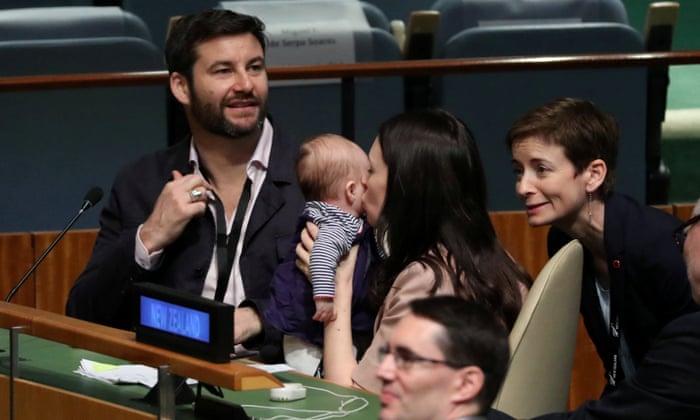
New Zealand Prime Minister Jacinda Ardern is stepping down after a rocky five years that catapulted her to global prominence as a progressive leader while also putting her on the defensive at home. Here are five key moments in Ardern’s leadership, as she declared on Thursday: “I know that I no longer have enough in the tank.”
1. A child makes UN history

Ardern received praise in September 2018 after she was seen kissing and bouncing her then three-month-old daughter, Neve, inside the United Nations General Assembly hall – the first time a baby has appeared in the organization’s history.
After Pakistan’s Benazir Bhutto in 1990, she was only the second prime minister to give birth while in office. “I want to normalize it,” Ardern told CNN. “By being more open it might create a path for other women. (https://blogs.20minutos.es/) ”
2. Mosque attack
Ardern received considerable appreciation for her response to the March 2019 Christchurch attacks, in which a white supremacist gunman killed 51 people and badly injured another 40.
When she wore a headscarf and consoled victims’ relatives after the massacre, it reverberated around the world. She later described it as an unplanned act of respect for the Muslim community.
She also received praise for promptly adopting gun-control legislation and pressuring social media titans to address online hate speech.
Ardern was once again comforting a stunned nation nine months later, when a volcanic eruption on White Island, popularly known as Whakaari, killed 21 people and injured scores more.
3. ‘Covid election’
Ardern was re-elected to a second term by a landslide in October 2020, riding a wave of “Jacindamania” popularity fueled by her management of the Covid-19 pandemic.
Ardern termed her second victory “the Covid election” after cobbling together a coalition government in 2017.
She ran on her government’s accomplishment in reducing community transmission of the coronavirus, which had claimed 25 deaths in a five-million-person population at the time.
New Zealand’s borders were only fully reopened in August of last year. The total number of deaths linked to Covid has now reached 2,437.
4. Protests against the Pandemic
A small but outspoken part of New Zealand’s populace turned against Ardern’s handling of the pandemic two years after she won her second term. Hundreds of protesters seized the grass in front of Wellington’s famous Beehive parliament building for four weeks beginning in February last year.
Ardern refused to meet with the protesters, many of whom espouse anti-vaccine conspiracy theories, and accused them of using “intimidation and harassment” to make their point.
The protests ended in a scuffle, with some people breaking up paving stones and flinging them at riot squad officers attempting to disperse the camp.
More than 100 people were finally arrested, with Ardern subsequently describing the scenario as “very unpleasant” and “complex”.
5. Popularity dwindles
Ardern’s popularity dwindled as she dealt with dwindling trust in the government, a deteriorating economic condition, and a resurgent conservative opposition.
Recent surveys place the center-right alliance in the lead, with elections scheduled on October 14.
The stress has been clear in recent months — Ardern demonstrated a rare breakdown of control when she was unintentionally captured on the microphone calling an opposition leader an “arrogant prick”.
